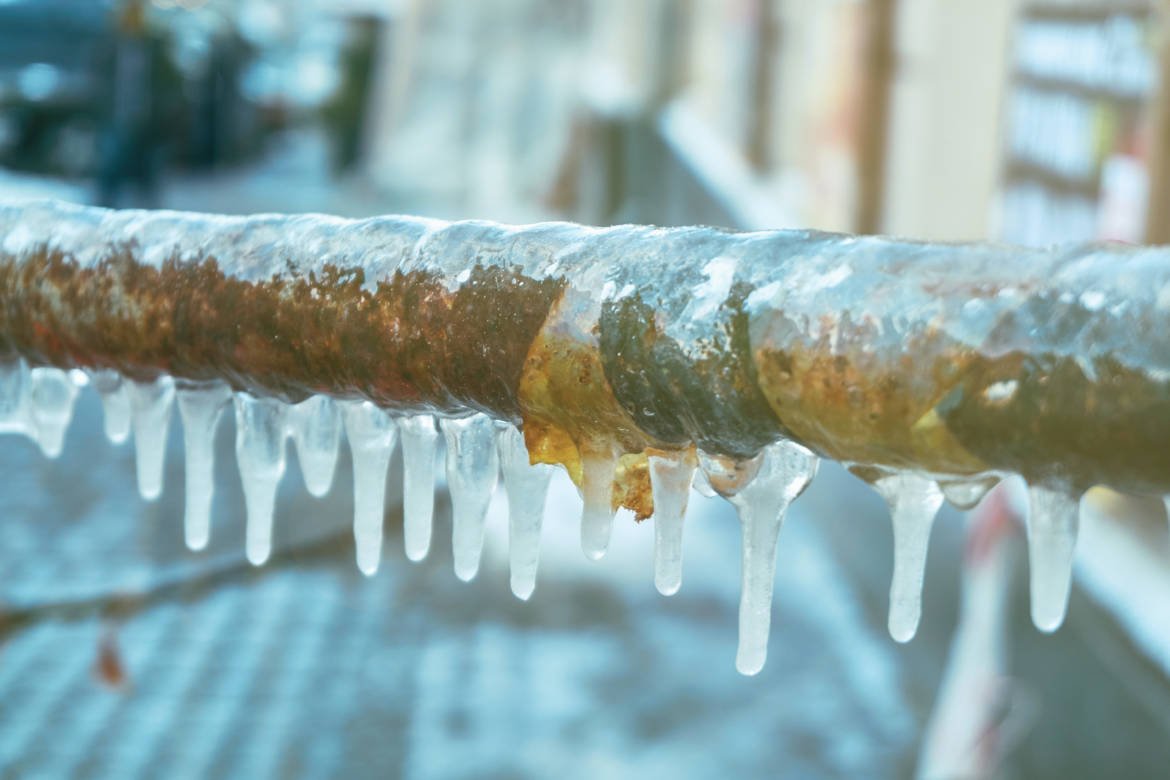They are making a number of good observations regarding Preventing and dealing with frozen pipes as a whole in the content down below.

Cold weather can damage your pipes, specifically by freezing pipes. Right here's exactly how to avoid it from taking place and what to do if it does.
Intro
As temperature levels decline, the risk of frozen pipes increases, possibly causing pricey repairs and water damage. Understanding how to prevent icy pipes is important for property owners in cold environments.
Prevention Tips
Shielding prone pipes
Cover pipelines in insulation sleeves or use warm tape to protect them from freezing temperature levels. Focus on pipelines in unheated or external areas of the home.
Heating methods
Maintain interior areas sufficiently heated, specifically areas with pipes. Open up cupboard doors to permit warm air to distribute around pipelines under sinks.
Exactly how to identify icy pipelines
Look for reduced water circulation from faucets, unusual odors or noises from pipelines, and visible frost on exposed pipes.
Long-Term Solutions
Structural changes
Take into consideration rerouting pipelines far from exterior wall surfaces or unheated areas. Include added insulation to attics, basements, and crawl spaces.
Updating insulation
Buy high-grade insulation for pipelines, attics, and walls. Proper insulation aids preserve consistent temperature levels and lowers the danger of icy pipelines.
Safeguarding Exterior Plumbing
Yard pipes and outdoor faucets
Separate and drain yard hose pipes prior to winter season. Mount frost-proof spigots or cover outside taps with insulated caps.
Comprehending Icy Pipes
What creates pipelines to freeze?
Pipes ice up when revealed to temperature levels below 32 ° F (0 ° C) for extended periods. As water inside the pipelines ices up, it increases, taxing the pipeline walls and potentially causing them to rupture.
Dangers and damages
Frozen pipes can result in water system interruptions, property damage, and pricey fixings. Ruptured pipes can flood homes and trigger considerable architectural damage.
Indications of Frozen Pipeline
Identifying icy pipes early can avoid them from bursting.
What to Do If Your Pipes Freeze
Immediate actions to take
If you suspect frozen pipelines, keep faucets open to soothe stress as the ice thaws. Make use of a hairdryer or towels taken in warm water to thaw pipes slowly.
Verdict
Protecting against frozen pipelines needs proactive actions and fast actions. By understanding the reasons, signs, and safety nets, house owners can protect their plumbing throughout winter.
5 Ways to Prevent Frozen Pipes
Drain Outdoor Faucets and Disconnect Hoses
First, close the shut-off valve that controls the flow of water in the pipe to your outdoor faucet. Then, head outside to disconnect and drain your hose and open the outdoor faucet to allow the water to completely drain out of the line. Turn off the faucet when done. Finally, head back to the shut-off valve and drain the remaining water inside the pipe into a bucket or container. Additionally, if you have a home irrigation system, you should consider hiring an expert to clear the system of water each year.
Insulate Pipes
One of the best and most cost-effective methods for preventing frozen water pipes is to wrap your pipes with insulation. This is especially important for areas in your home that aren’t exposed to heat, such as an attic. We suggest using foam sleeves, which can typically be found at your local hardware store.
Keep Heat Running at 65
Your pipes are located inside your walls, and the temperature there is much colder than the rest of the house. To prevent your pipes from freezing, The Insurance Information Institute suggests that you keep your home heated to at least 65 degrees, even when traveling. You may want to invest in smart devices that can keep an eye on the temperature in your home while you’re away.
Leave Water Dripping
Moving water — even a small trickle — can prevent ice from forming inside your pipes. When freezing temps are imminent, start a drip of water from all faucets that serve exposed pipes. Leaving a few faucets running will also help relieve pressure inside the pipes and help prevent a rupture if the water inside freezes.
Open Cupboard Doors
Warm your kitchen and bathroom pipes by opening cupboards and vanities. You should also leave your interior doors ajar to help warm air circulate evenly throughout your home.

We had been shown that write-up about Winter Plumbing Precautions: Preventing Frozen Pipes through an acquaintance on another web property. Are you aware of another person who is in the market for the topic? Please feel free to share it. Thanks for your time invested reading it.
Call Today
Comments on “How to Defend Pipes from Freezing: Specialist Advice”